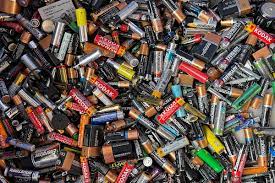Kia ora, My name is Jack Karetai-Barrett; I’m a year nine student at Whakatane High School, and this is my monthly zero waste column.
This month, I’m writing about food waste.
According to lovefoodhatewaste.co.nz, New Zealand households send over 298 tonnes of food waste to landfill each year. Over half of that could have been eaten ($1.17 billion dollars worth of food!). These figures don’t include what is consumed by home worm farms, chickens, pets, compost, and garbage disposal units. That is so much food!
There are some changes coming to solid waste management throughout Aotearoa, New Zealand over the next few years, as we see standardising of kerbside collection. Local government (councils), in collaboration with the waste management sector, will play a really important role in making improvements to the management of household recycling and managing food waste.
Some councils may have to stop the collection of specific materials within their kerbside recycling programs, and others will have to add items to theirs, so it is the same kerbside collection in Dunedin, as it is in Whakatane, and over the rest of the country. Out of the entirety of household waste deposited at the kerbside, we must increase the amount we redirect, away from landfill:
30% redirected by 2026
40% redirected 2028
50% redirected 2030
In March 2018 the Auckland Council began a food waste collection trial. The programme was so successful, it is now increasing to become a city-wide program for collecting food waste at the kerb. The goal is to prevent up to 70,000 tonnes of food from being sent to landfills annually. 23-litre containers were delivered to addresses around the city, and are collected every week. They contain items like tea bags, paper towels, fruit and vegetable peels, bread, dairy items, coffee grounds, meat scraps and every other imaginable food that does not get consumed. The containers are then transported to a plant in Papakura, where it is . From there, they are then transported down to the Ecogas facility in Reporoa, where significant processing takes place, turning the kai from waste, into valuable resources.
Lucky for me, because of the work my Mum does, I was able to visit and explore the Ecogas facility. Here is what I learned: On arriving in Reporoa, kai is immediately loaded into hoppers and scanned for any metals and plastic waste. Once the plastics and metals are removed, the food waste takes on the appearance of a chunky brown soup. This mixture is then piped into one of four large digestion tanks where bacteria starts consuming it. Much like the process that occurs in a cow’s stomach, micro-organisms in these tanks break down the organic matter through anaerobic digestion, without using oxygen. (Anaerobic digestion is when bacteria breaks down organic matter like animal waste, leftover food, .).
This process transforms food scraps into methane, carbon dioxide, liquid fertiliser, and sulphur. The methane is used to heat a neighbouring greenhouse, instead of fossil fuels, as it was previously natural gas boilers. And the carbon dioxide is pumped into the greenhouse to be used as an environmental growth stimulant. The sulphur and liquid fertilisers are applied to farmland as a bioavailable topical fertiliser - and it sure makes the grass green. It's a great way to manage food waste while producing valuable resources. Best of all, it diverts 100% of food away from landfill, which reduces the amount of methane we generate from waste. The only thing that goes to landfill from Ecogas is the cleaned nonorganic material people put in their kai bins.
Methane is a very bad thing to have in our environment. It's 25x more effective at trapping heat in the atmosphere than carbon dioxide. Methane comes from things like animal excrement (farts and poo), making fossil fuels, and of course, from rotting organic materials in landfills. It contributes to climate change tremendously, which hurts our environment. Controlling methane is very important for slowing down climate change.
Each household must keep doing a better job of sending less household waste to landfills, because it is up to us to do better for our environment. Only buy the food you need, use it all, and try not to waste any food. And, bring your waste to the right place!







